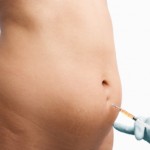Tummy Tuck Procedures - Removing those Imperfections
 A lot of aspects change the contour of your abdomen. Your abdominal tissues can stretch from childbirth or significant weight gain to an extent that is unattainable with exercise. Excess fat deposits may produce unwanted bulges or fullness, and loose skin following childbirth or weight loss may produce an unattractive abdomen.
A lot of aspects change the contour of your abdomen. Your abdominal tissues can stretch from childbirth or significant weight gain to an extent that is unattainable with exercise. Excess fat deposits may produce unwanted bulges or fullness, and loose skin following childbirth or weight loss may produce an unattractive abdomen.
Tummy tuck procedure is a method that improves the contour and appearance of the abdomen by tightening the underlying muscle framework, and clearing away excess fat and loose skin and many stretch marks. This procedure is also called “abdominoplasty”.
The enlargement of your uterus during pregnancy causes significant stretching of the tissues of your abdomen. After giving birth, you can exercise to recover the tone in the muscles, but the facial tissues, which interconnect the muscles, do not respond to this effort. The bulging that is cause by the stretching or looseness of the lower abdominal tissues can’t be corrected by exercising.
The tissues may become much looser and may actually hang downward especially after significant weight loss. This happens as fat is lot beneath the skin of your abdomen.
Localized deposit of fat can happen in areas of the abdomen even in individuals who are not overweight. It produces an undesirable contour. If the only problem is the fat deposits, this may be corrected by liposuction alone. But, if stretched musculature or loose skin is present, abdominoplasty is necessary to achieve the best result.
Complete abdominoplasty
In general, a complete or full abdominoplasty follows these steps: First, an incision is made from hip to hip just above the pubic area. Second, another incision is made to free the navel from the surrounding skin. Third, the skin is detached from the abdominal wall to reveal the muscles and fascia to be tightened then the muscle fascia wall is tightened with sutures. Fourth, liposuction is often used to refine the transition zones of the abdominal sculpture. And lastly, a dressing and a compression garment sometimes are applied and any excess fluid from the site is drained.
Partial abdominoplasty
A mini or partial abdominoplasty procedure has the following steps. First, a smaller incision is made. Second, the skin and fat of the lower abdomen are detached in a more limited fashion from the muscle fascia. The skin is then stretched down and excess skin is removed. Third, sometimes the belly button stalk is divided from the muscle below the belly button slid down lower on the abdominal wall. Fourth, sometimes a portion of the abdominal muscle fascia wall is tightened. Fifth, liposuction is often used to contour the transition zone. And sixth, the flap is stitched back into place.
Limitations and Risks
The reshaping of your abdomen depends on several factors. The quality of your tissues is very important, and is a factor over which we have little control. Overweight people get much better correction if you achieve a more ideal body weight before your tummy tuck procedure. The amount of fat and skin that can be safely removed during the procedure has limitations.
Recovery
After tummy tuck procedures, most patients have moderate discomfort on the first 48-72 hours, decreasing rapidly thereafter. The level of discomfort depends on the extent of surgery required to reshape the abdomen. A medication is prescribed to keep the patient comfortable as possible. The patient will fell the abdomen getting tighter as the result of the procedure. This feeling will decrease over 1-3 weeks as swelling decreases and the tissues become accustomed to their new position.



Comments powered by CComment